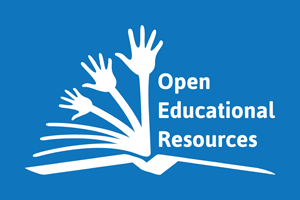2018 School Spending Survey Report
Life Is Like an Open Book | Open Access in Action
The Open Educational Resources (OER) phenomenon promises access to information with fewer barriers to academics, but the change will be disruptive. As Open Access has created turmoil among peer-reviewed journal publishers, OERs have similarly challenged curriculum. Learning content—from textbooks to course readings, assessment tools, and other material—was traditionally the domain of a few specialized publishers. However, with the advent (and dramatic proliferation) of digital content, traditional publishers have struggled to keep up.

© 2012, Jonathas Mello, www.jonathasmello.com
Traditional publishers’ complex Learning Management Systems (LMSs) combine print with other materials and a tracking/testing methodology, typically provided on a subscription basis. However, instructors love to innovate, and they frequently pull in material that the publisher has not thought of—or does not own. This has led to the phenomenon known as OER. Simply put, it encompasses material—primarily digital—that has been released under a Creative Commons or similar license for open or nearly open use. OER are championed by many initiatives, beginning with MIT’s OpenCourseWare project, and including Rice University’s OpenStax CNX (formerly Connexions), Amherst’s Open Education Initiative, and the ISKME’s OER Commons.The Upside (for Students)
Proponents of OER cite the high prices of traditionally published curricula. Studies like the BookStats project, a joint venture between the Book Industry Study Group (BISG) and the Association of American Publishers (AAP), confirmed that while K-12 and Higher Ed textbooks accounted for about 5-6 percent of unit sales in the U.S., they accounted for over 35 percent of net dollar sales. This means, as any student will tell you, high prices for traditional textbooks. These are often justified by educational publishers as a hedge against the textbook resale market, and the rising trend for textbook rentals. However, according to BISG studies, textbook piracy is on the rise, as is the demand for free or low-cost curriculum. Insofar as OER reduces student costs, they will only grow in popularity. OER are not limited to free online textbooks. Other types of content commonly include educational games, multimedia resources, simulations, and video lectures. “These are available, usable, and reusable in many different contexts by any educator, anywhere in the world,” according to Dr. Rory McGreal, the UNESCO/Commonwealth of Learning Chair in Open Educational Resources. McGreal went on to note that while such materials are available directly to students, they are more commonly used by instructors, who find, link to, and in many cases download these files and incorporate them in their own lessons. Another driver of OER is the Massive Open Online Course (MOOC) phenomenon, where college-level courseware is developed and made available to the public—not usually for credit, but for a lesser certification of completion, at little or no cost. MOOCs are typically based on existing lectures and courses from major universities—often intended to draw public attention to a professor or institution. However, quite often, MOOCs require their own curriculum. “In a sense, MOOCs and OER are separate phenomena, but MOOCs need learning material,” said Jill Emery, Collection Development Librarian and Assistant Professor at Portland State University. “You can’t use copyrighted or subscription-based materials when you’re opening up a class to anyone in the world. So, OER is a great alternative.”The Challenges
As with all open initiatives, a major concern is funding. Development of worthwhile courseware requires expertise and time—things often in short supply for busy professors. Governmental and NGO funding initiatives are on the rise, however. “The State University of New York (SUNY) system received a grant to make it an incentive for faculty members to develop textbooks for their courses, for students to use without having to buy expensive materials,” Emery said. There have been similar initiatives in California, she noted, allowing libraries to provide funds for OER development. “Often, faculty members simply don’t have the time to develop these materials,” she said. “These initiatives provide the incentive for them to begin.” Another concern is findability and consistency. “The quality varies quite a bit,” Emery said. Not all Open Educational Resources are indexed and findable in the same way, although efforts by MIT and other institutions are making it easier for some educators to find what they need. Emery noted that MIT provides Creative Commons licensing for over 2,200 of its courses. The task of finding the right resources, however, will likely fall to academic librarians and research staff. The greatest challenge is perhaps the emergence of learning platforms and Learning Management Systems (LMSs). Many institutions are using open source environments such as Moodle, which frequently provides access to OER. However, despite the promise of curriculum flexibility and lower student costs, the prospect of building and maintaining an open source LMS can be daunting. Traditional publishers, fully aware of this, are developing their own LMS offerings, incorporating their copyrighted content. The future will undoubtedly be a mix of traditional, copyrighted curricula, supplemented by an increasing amount of OER. Governmental policy will undoubtedly play a major role. If educational funding and grants increase, OER will continue to make significant inroads into the classroom experience.
RELATED
RECOMMENDED
TECHNOLOGY
ALREADY A SUBSCRIBER? LOG IN
We are currently offering this content for free. Sign up now to activate your personal profile, where you can save articles for future viewing









Add Comment :-
Comment Policy:
Comment should not be empty !!!